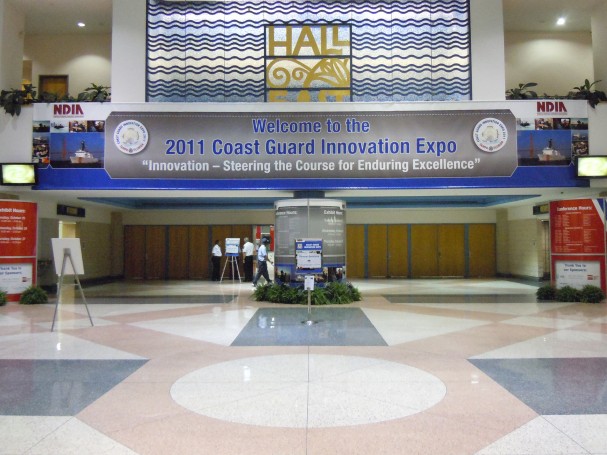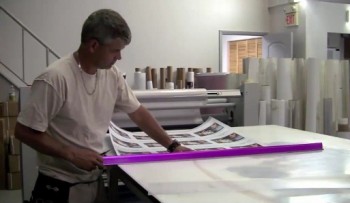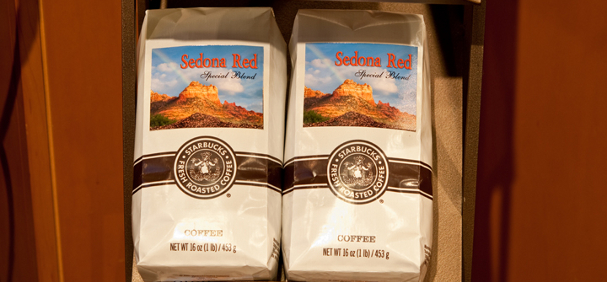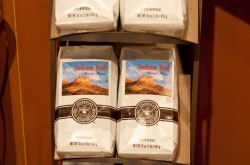Printing effective trade show graphics is a real balancing act. They need to be durable for the length of the event, economical and high-quality. Plus, they usually need to be ready yesterday. Sure, that’s the case with most wide-format graphics, but it’s especially true for trade show and exhibit work.
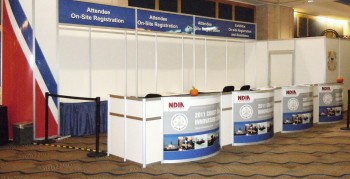 Bill Harriman, owner of Custom Signs & Graphix in Brooksville, Fla., just north of Tampa, is a seasoned pro who specializes in producing the best possible trade show graphics for his customers. Harriman launched the company with a vinyl cutter, right before large format inkjet printing came into its own.
Bill Harriman, owner of Custom Signs & Graphix in Brooksville, Fla., just north of Tampa, is a seasoned pro who specializes in producing the best possible trade show graphics for his customers. Harriman launched the company with a vinyl cutter, right before large format inkjet printing came into its own.
Harriman has been through the entire evolution of the trade show market and now plies his trade with the latest printer technology from HP, four that run aqueous inks and one that runs solvent.
A good example of the quality output from Custom Signs & Graphix is a recent project Harriman completed for a Coast Guard trade show and conference in Orlando. The event needed a lot of graphic panels for the entrance, cyber cafes, directional signage for the conference component and a smattering of vendor booths.
Harriman estimates that he printed 150 panels, ranging in size from 22” x 28” to 4’ x 10’. All of the panels were printed on LexJet 8 Mil Production Satin Photo Paper, laminated with LexJet 3 Mil Gloss UV Premium Low Melt laminate and backed with LexJet RubberMount Clear Adhesive so they could be applied to Sintra at the show.
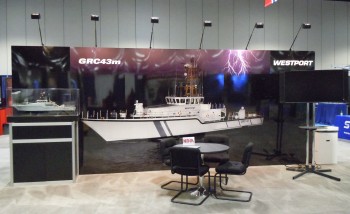 For extensive print projects like this one, Harriman says he’ll usually print the entire roll and then laminate it all at one time. In addition to the production processes Harriman has honed over the years, he says material choice is just as important.
For extensive print projects like this one, Harriman says he’ll usually print the entire roll and then laminate it all at one time. In addition to the production processes Harriman has honed over the years, he says material choice is just as important.
“If I don’t like it, I don’t send it out. It’s a matter of using the best technology and materials. The materials I buy from LexJet are not the most expensive, nor are they least expensive. What they do is put the ink on the paper and make it look good,” he says. “I’m not interested in finding a cheaper product. I try to find materials that are economical and as close to the top-of-the-line as possible. That’s where your value is, and it’s what I’ve found with LexJet’s products.”
For the Coast Guard trade show, Harriman was after the perfect balance of economy and quality. He says the LexJet 8 Mil Production Satin Photo Paper finds that balance for this type of application.
“I had been using an older, similar paper. When this newer material was suggested to me, I was a little apprehensive at first about changing over since it’s important for me to have consistent performance from project to project,” explains Harriman. “When I tested it I found that it was consistent and performed far better. It dries almost instantly so it allows me to laminate right away. Plus, you can handle the material and not worry about keeping your hands off of it; it’s not super fragile like other papers.”

